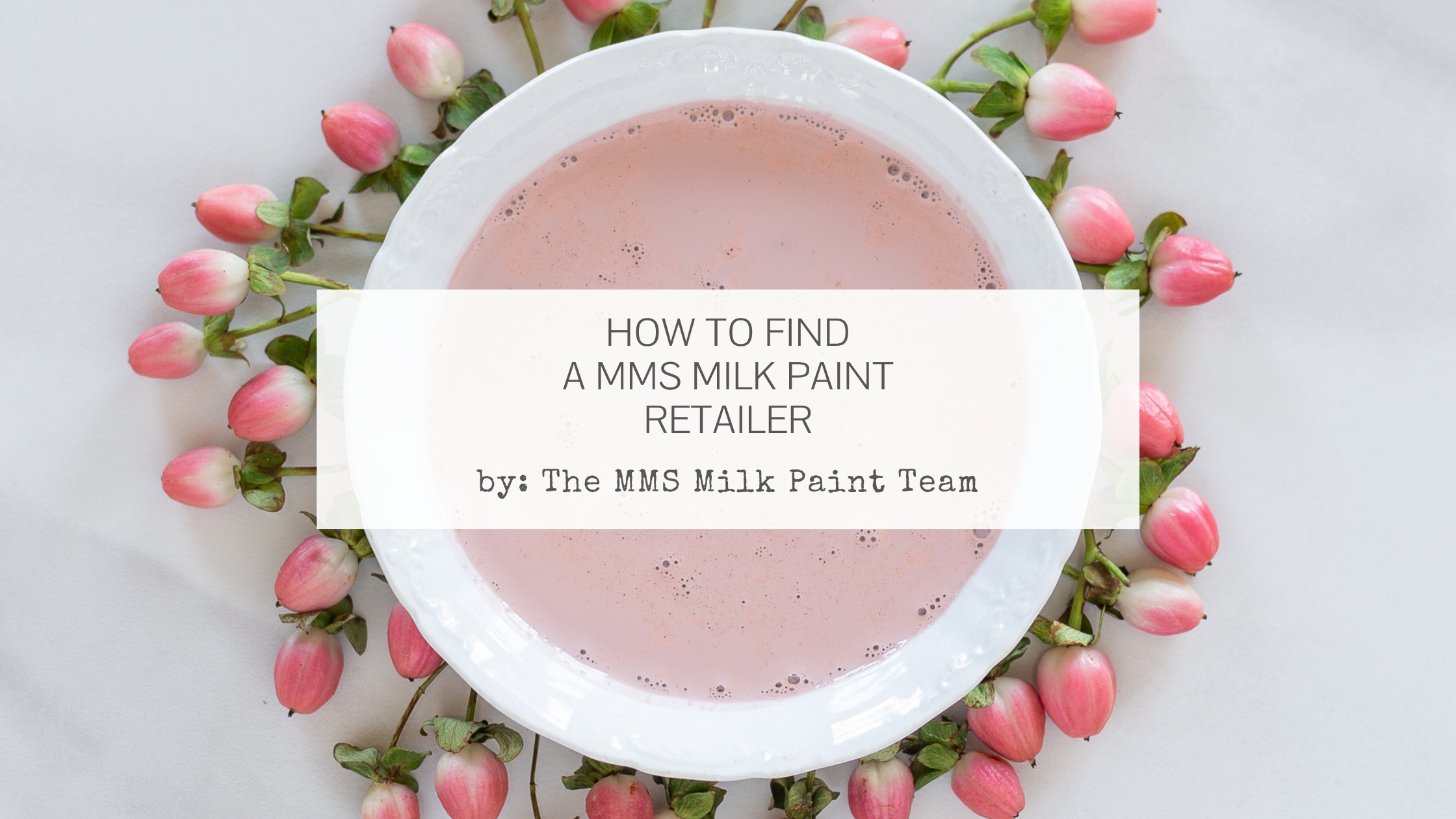What is Milk Paint?
Our Number 1 Most Frequently Asked Question
If you’ve landed on our website, chances are you are curious about Milk Paint! Many folks have heard of oil, acrylic, latex and chalk type paints, but what about MILK PAINT?
Allow us to introduce you to the world of Miss Mustard Seed’s Milk Paint!
What is Milk Paint?
Milk Paint is a powdered form of paint. It’s mixed with water to become liquid. Our formula has four 100% natural ingredients that you can actually pronounce - casein (milk protein), lime (calcium hydroxide), natural pigments, and plant-based filler.
This simple formulation causes Milk Paint to behave very different from its more modern counterparts like latex and acrylics. It provides a beautiful matte finish that shows amazing color variance.
Milk Paint is also the oldest known form of paint! It pre-dates chalk type, latex, acrylic and even oil paints! Milk Paint has been around for thousands of years and has been discovered in cave paintings and Egyptian tombs.
How Old is Milk Paint?
The oldest known record of Milk Paint was discovered in 2015 on an ancient fleck of dolerite. The specimen was dated to be 49,000 years old and contained traces of casein (milk protein) and ochre (a naturally occurring plant used for dyes).
It has been found on cave paintings in Australia and in ancient Egyptian tombs. It was used to paint barns and wooden antique furniture.
Needless to say, Milk Paint is NOT the new kid on the block!
What Makes Milk Paint Special?
Milk Paint is a very unique paint both in its composition and the looks it can create.
It is the absolute best paint for raw wood. It penetrates like a stain, but looks like a paint. This not only preserves the grain and original texture of the surface, but it also won't chip or flake away.
On pre-finished surfaces, it can flake away in some areas, giving a piece an authentically aged finish that can’t be achieved with any other paints. How it chips, when it chips and to what extent is quite random and unpredictable. While this may make some beginner painters nervous, it’s part of the fun of using Milk Paint!
A Non-Chippy Milk Paint Finish
What if you don't want the chippy look on a piece with an existing finish?
We carry a product that can be added directly to your mixed Milk Paint. This water-based acrylic emulsion will make the paint adhere to existing finishes, other types of paint, metal, glass, and other slick surfaces.
How Do I Prep for Milk Paint?
Raw Wood - No prep is required.
Pre-Finished Surfaces - Scuff up the surface with medium grit sandpaper (100-150) prior to painting. Remove the dust with your vacuum. If you want the chippy look, do a light scuff sanding. If you don’t, go a bit heavier on the scuffing and mix Bonding Agent into your Milk Paint.
Glass & Metal - Clean the surfaces with either Windex or a slightly dampened rag. Obviously you can’t sand these surfaces, so mix up your Milk Paint, add Bonding Agent and have fun!
Mixing Milk Paint
There are lots of ways to mix Miss Mustard Seed’s Milk Paint. Check out these options and see which one suits you best.
Controllable Consistency
The cool thing about milk paint is that you can change its consistency to suit your project. You can mix it on the thin side for a wash or a stain. Mix it thick to create texture and crustiness.
If you want normal opacity, then the ideal consistency you’re aiming for is that of melted ice cream. You know when you eat ice cream, and you get towards the bottom of the bowl where that “soup” is? That’s what your Milk Paint should feel like!
With that said, it will definitely feel thinner than latex, acrylic and chalk type paints. Don't expect that thick, smooth body that’s consistent with modern paints. It’s normal for Milk Paint to have a few lumps and clumps here or there. When you brush the paint on, the lumps usually work themselves out.
Be Flexible!
Milk Paint does have a bit of a learning curve if you’ve never used it before. It’s practically 180 degrees different than modern paints, and there’s a reason for that! Because of its simple formulation, it doesn't have chemicals in it that make it smooth and creamy like modern paints. It’s kind of the “natural peanut butter” of the paint world!
We recommend trying Miss Mustard Seed’s Milk Paint out on a scrap piece of wood or on furniture with which you don’t have a strong emotional attachment. Painting great-grandma’s antique table might not be the best first-time project!
We’re Here to Support You!
Our retailers are available to assist you with more hands-on experiences with Miss Mustard Seed’s Milk Paint. To find one in your area, check out our blog post that teaches you how to use our retailer locator map.
Questions can be directed to our team’s email account at hello@mmsmilkpaint.com.









